Known as one of the oldest and richest civilizations to have ever existed, the Egyptian civilization has so far stood the test of time. With its sky-scraping pyramids and monumental Sphinx that stands guard at the tombs of the pharaohs, we tend to forget another subtle but important part of ancient Egyptian culture that exists alongside the pyramids and the Sphinx – ancient Egyptian paintings.
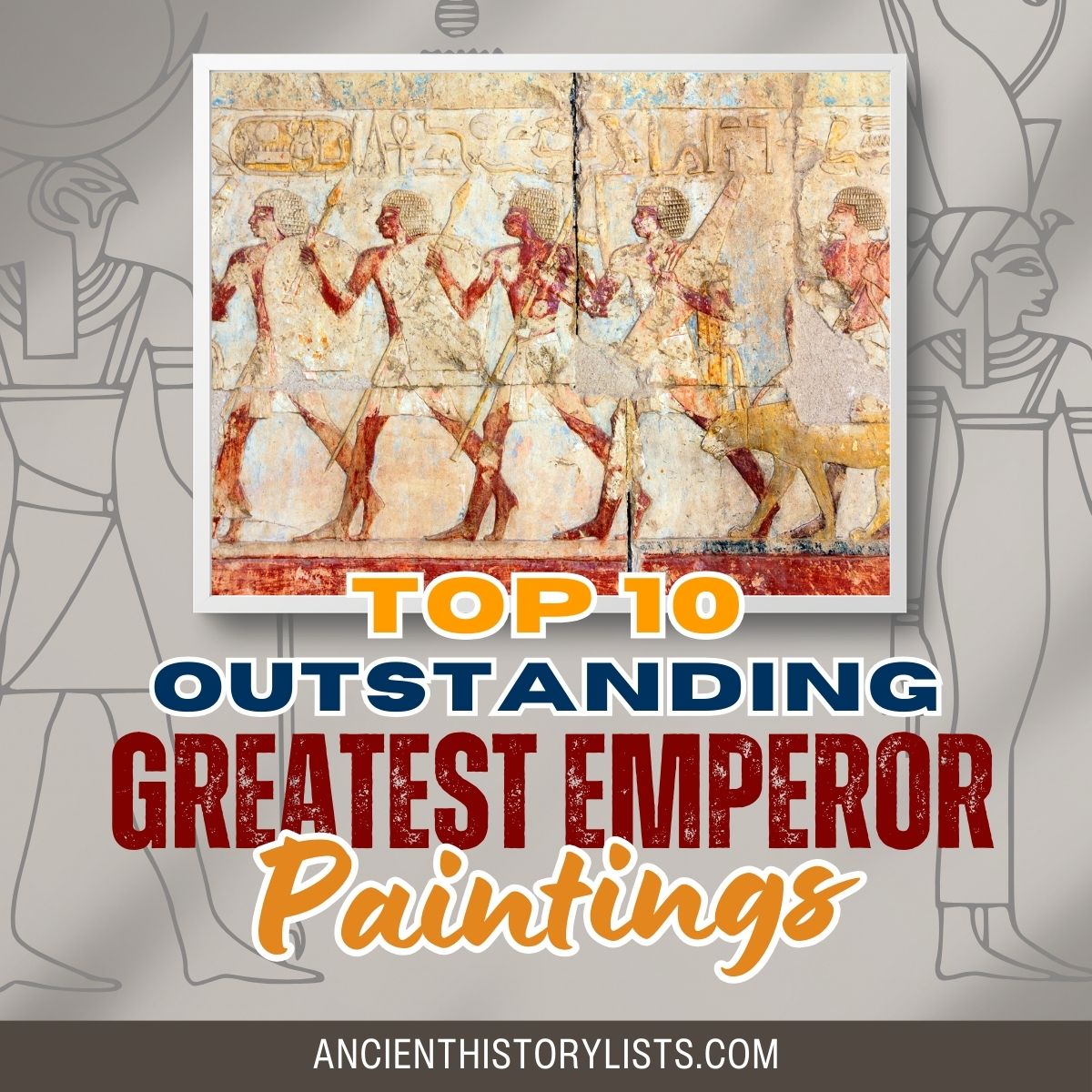
Along with other precious artifacts that exist from the ancient era, these paintings represent the essence of the bygone age of Egyptian history.
Here is a list of the top 10 ancient Egyptian art pieces that still fascinate visitors to Egypt and reflect the essence of this ancient culture:
10. Egyptian Dance
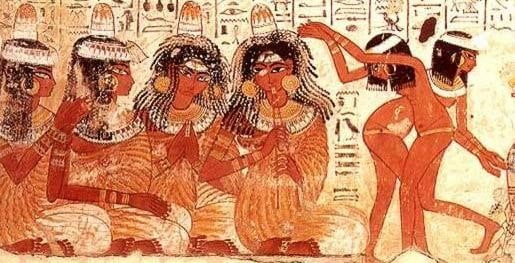
Dancing played a major role in the culture of the ancient Egyptians. Music and dance were the norm. A rhythmic dance was imprinted into the hearts of the Egyptians, with people often working along to the sounds of songs and percussion instruments.
The ancient Egyptian era also saw the birth of street dancers who would entertain passersby. Egyptian dance was divided into different categories depending on the participants and the occasion.
This painting, in particular, shows “pair dancing” where two women dance together in a pair while another group plays music. Pair dancing involved either two men or two women dancing together in unison. There were also group dances where a group of trained performers would entertain spectators, but even more popular were the festival dances with each dance unique to its particular celebration.
9. Mummification in Ancient Egypt
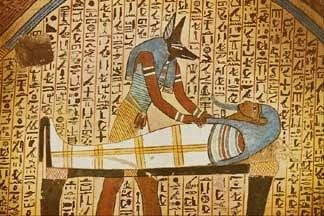
Mummification was an important part of the concept of an afterlife. A proper ritual had to be followed to mummify a dead person to ensure his or her resurrection after receiving judgment from the Egyptian gods. Before the Old Kingdom (the earliest of the Egyptian civilizations) bodies which were buried in the desert were naturally preserved by desiccation. But as time passed, wealthier Egyptians started to arrange for more elaborate artificial mummification.
By the time of the New Kingdom, people had perfected the art of mummification. The best of the techniques took almost 70 days and involved preserving the internal organs, including the brain, and the desiccation of the body in a mixture of salts called natron. In the Old Kingdom, the jackal-headed god Anubis would look after the burials of the kings. He was later replaced by Osiris somewhere during the Middle Kingdom.
See also:
8. Egyptian Deities
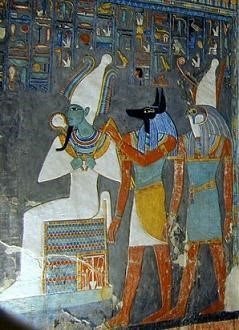
Ancient Egyptian society had a complex system of polytheistic beliefs, meaning the Egyptians believed in and worshiped multiple gods. More often than not, these gods were grouped in a pantheon along with their religions and rituals.
The entire civilization was rich with diverse religions, each of them with their own deities, rituals and beliefs, and they had many staunch followers. It was said that different cities had different gods specific to them, and followers worshiped their individual deities with devotion.
The most popular of the gods were the sun god Ra; Anubis, the god of death and embalming; and Horus, the god of the sky. Osiris, Anubis, and Horus were important in the ancient pantheon of Egyptian gods.
7. Tomb Paintings
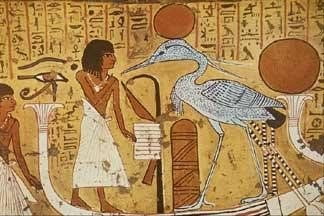
The Egyptians made the most elaborate and beautiful tombs for their pharaohs. In fact, ancient Egypt boasted the most remarkable memorial tombs of all, most of which still survive today: the pyramids. There are a number of famous pyramid tombs, noticeably three massive tombs from the fourth dynasty. But even more spectacular are the paintings engraved inside them, often depicting the journey of the deceased into the afterlife.
This particular painting in the tomb of Irinefer depicts the deceased standing in the barge of the phoenix, the symbol of the sun god of Heliopolis. Most tombs have a number of paintings reflecting the lives of the deceased, and the royal tombs are even more vividly carved with paintings and cartouches reflecting their journey before their death and then into the afterlife.
6. Book of the Dead
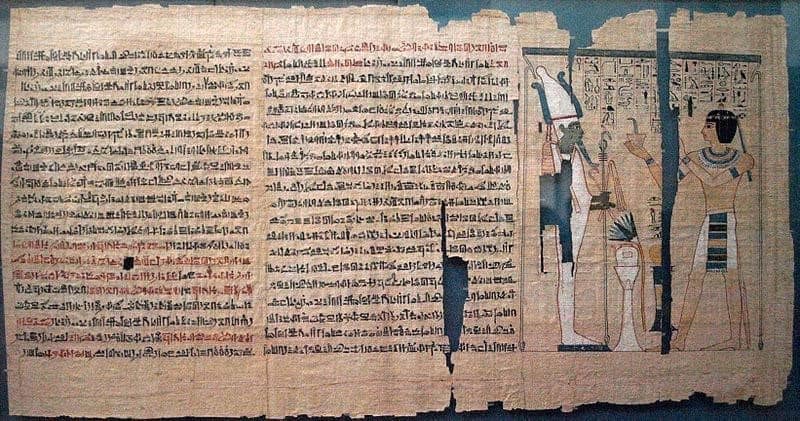
Those who have seen the pop culture movie The Mummy, will know that the Book of the Dead is an ancient script that contains texts on how to bring back the dead in the afterlife. But is this really true? The answer would be yes and no! The original name for the text is rw nw prt m hrw which in literal translation is “The book of coming forth by day” or “The book of emerging forth into the light”.
This book consists of a number of magical spells that are supposedly used to assist a dead person’s journey through the underworld once they have died and been resurrected into the afterlife. The earliest of the spells and manuscripts date back to 3000 BC, and the newer spells were added later in Egyptian history, most recently during the 11th to the 7th centuries BC.
5. The Egyptian Afterlife
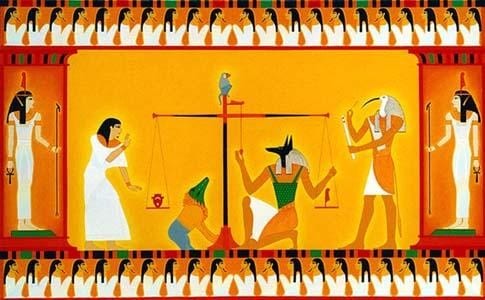
Ancient Egyptian religion was based on a firm belief in the afterlife. Rather than a complete cessation of life, death was taken as a temporary interruption. They strongly believed that eternal life was possible through the means of piety and mummification.
It was thought that an individual’s afterlife would be decided by the Egyptian gods, as clearly depicted in the above painting. The pharaohs were staunch believers in the idea of the afterlife, and for that reason used to make grand preparations for their funerals, making sure all the arrangements were made to ensure they had the essentials available when they were resurrected.
4. The Funerary
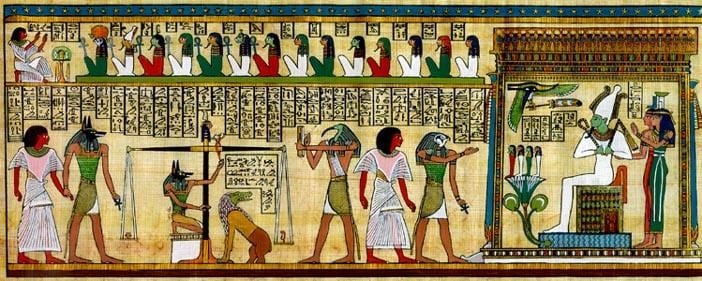
At a time when the concept of an afterlife was crucially important in the religion and rituals of the Egyptian people, the practice of funerary had a high place in Egyptian society. When a person died, it was at the funerary where the deities would decide whether the dead would get a chance of resurrection in the afterlife or not. Arriving at one’s afterlife was a demanding task, requiring a sin-free heart and the ability to recite spells and passwords from the Book of the Dead.
As clearly depicted in the above painting, the heart of the deceased would be weighed against the Shu’s feather of truth and justice which was taken from the headdress of the goddess Ma’at. If the heart was lighter than the feather, they could pass on, but if it was heavier, they would be devoured by the demon Ammut.
3. Cartouche of Tutankhamun
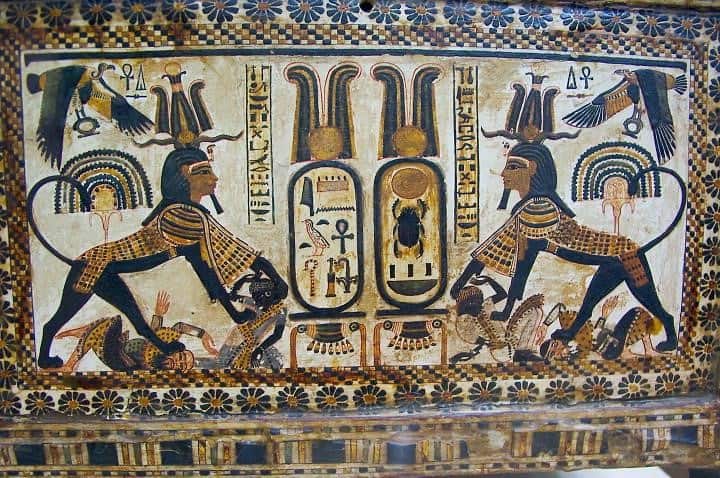
The Egyptian pharaoh Tutankhamun is probably one of the most well documented and most famous of the Egyptian pharaohs. Ever since the discovery of his nearly intact tomb in 1922, Tutankhamun, popularly referred to as King Tut, has received unprecedented media coverage and made frequent appearances in pop culture.
The cartouche of King Tut shown above depicts many events including the moment of his birth. A cartouche is an oval hieroglyph with a horizontal line at one end which indicates that the text within it concerns royalty. King Tut’s cartouche show his birth and throne name. The two cartouches can be seen between rampant Sekhmet lioness warriors depicted crushing several ethnic enemies while the vulture goddess Nekhbet flies protectively overhead.
2. Battle of Nubia
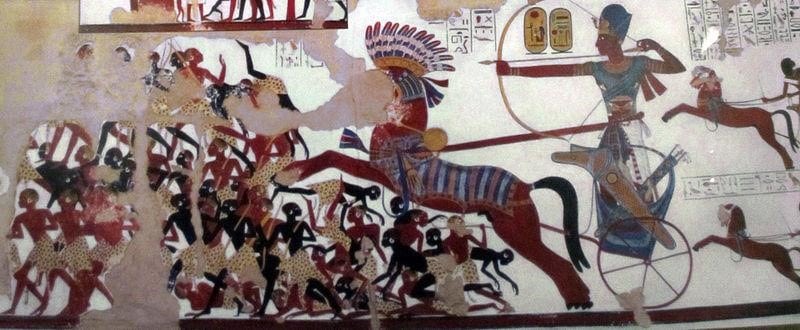
King Ramesses fought numerous wars during his reign, and emerged victorious from most of them, expanding the riches of the vast Egyptian empire during his 66-year rule from 1279 BC to 1213 BC. He is often regarded as the most celebrated and most powerful pharaoh in ancient Egypt.
His battle against the Nubians, a 200-year-old wealthy civilization, stands well documented in the form of the above papyrus painting. The battle is depicted on the south wall of the Beit el-wali temple, a Nubian stronghold. Ramesses II is depicted as charging into battle against the Nubians in a war chariot, while his two young sons Amun-her-khepsef and Khaemwaset are present behind him, also in war chariots.
On one of the walls of the temple it says that in one of the battles with the Nubians he had to fight the whole battle alone without any help from his soldiers.
1. Ramesses the Great – Battle of Dapur
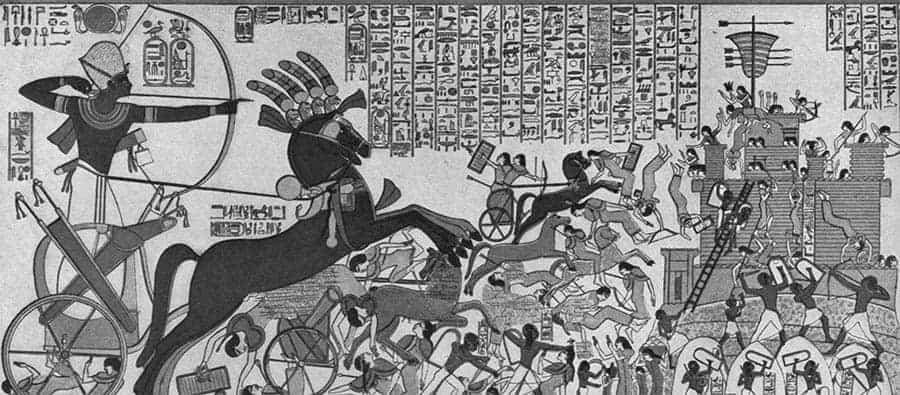
Ramesses was one of the greatest pharaohs to have ever ruled in ancient Egypt. During a reign of more than 66 years, he led a number of military expeditions expanding Egyptian territory and gaining a stronghold over an impressively wide area from the Nile delta to the scorching deserts. His reign saw many major historic events and campaigns which were well documented in the numerous statues, paintings, and other artefacts from that era.
This painting, found in one of the pharaoh’s tombs, shows the Egyptian king’s raid against the resurgent Hittite forces of Muwatalli, the entire battle being fought in present-day Syria. Against a substantial and far stronger enemy, Ramesses’ forces were outnumbered and caught in an ambush, but the pharaoh somehow fought the battle to a stalemate and returned home a hero.
Conclusion
Ancient Egyptian art has an almost 5,000-year-old history and boasts many extremely symbolic and fascinating paintings and sculptures. Even more notable is the fact that most elements of Egyptian art remained intact and stable for over 3,000 years, with no significant outside influences.
From some of the most beautiful depictions of ancient wars to the symbolic representation of religion, rituals and deities, the art of ancient Egypt has stood the test of time and survived to this day, allowing us a glimpse into this fascinating bygone era.
Even more notable is the fact that most elements of Egyptians art remained remarkably intact and stable over the period of 3000 years or even thousands more that saw no significant outside influence on the-then Nile valley civilization.